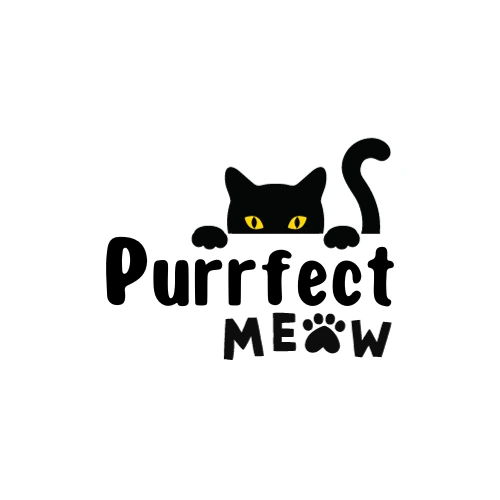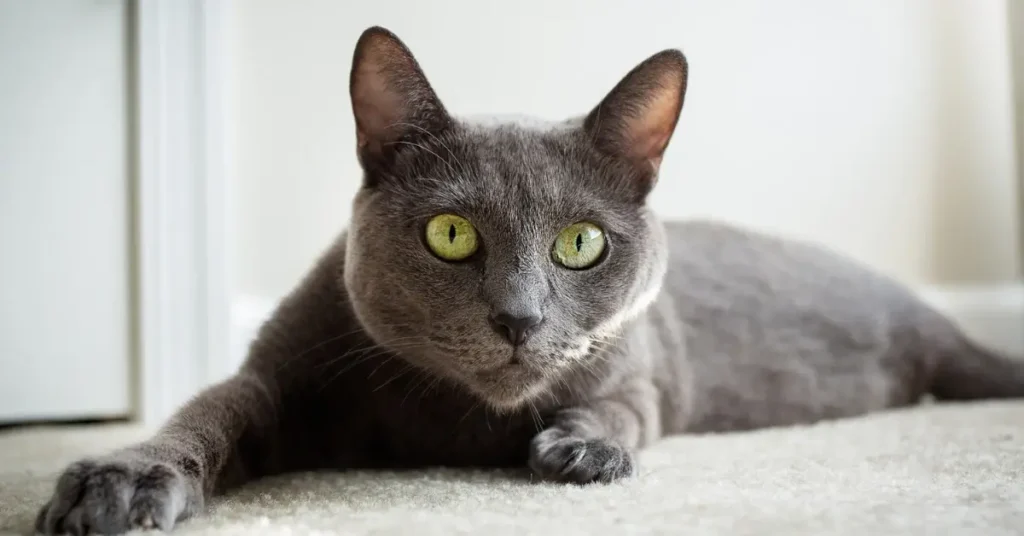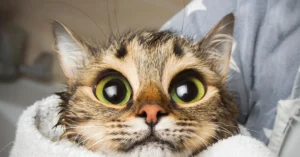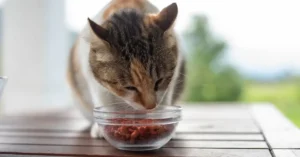Ever heard of a hypoallergenic cat breed? It sounds almost mythical, right? For those who love cats but sneeze at the mere thought of being near one, this concept is a game-changer. Imagine being able to cuddle a fluffy feline without reaching for a tissue box. That’s the magic of hypoallergenic cat breeds.
These special breeds are a ray of hope for allergy sufferers. Now, it’s important to note that no cat breed is 100% hypoallergenic, but some breeds produce fewer allergens than others. This means less sneezing and more purring!
Breeds like the Russian Blue or the Balinese have a reputation for being kinder to allergy sufferers, and they’re just as adorable and loving as their non-hypoallergenic counterparts.
In this little exploration, we’re diving into the world of hypoallergenic cat breeds. We’ll look at what makes them unique, how they differ from other breeds, and why they might be the perfect companions for those who have previously had to admire cats from a safe, sniffle-free distance.
So, whether you’re an avid cat lover with allergies or just curious about these special breeds, let’s unravel the mystery together!
Understanding Hypoallergenic
We often hear about the hypoallergenic cat breed when discussing pets for allergy sufferers. But what truly makes a breed hypoallergenic? Let’s dive right in.
What Does Hypoallergenic Mean?
The term hypoallergenic refers to breeds of cats that are less likely to trigger allergic reactions in humans. These breeds are often sought after by individuals sensitive to allergens common in other household pets. However, no cat breed is completely allergen-free.
Allergens in Cats: The Culprit Behind the Allergies
Allergens from cats that commonly affect humans include saliva, skin cells (also known as dander), and fur. These can all carry proteins such as Fel d 1, which are responsible for the allergic reactions many people experience.
Proteins and Cat Allergies: Fel D 1 and Other Allergens
Fel d 1 protein is the primary allergen found in cats. It’s present in a cat’s saliva, skin, and fur. When cats groom themselves, the protein from their saliva transfers to their fur, which can spread to the environment through shedding. Hypoallergenic cat breeds produce less of this protein, which can make them a more suitable option for allergy sufferers.
Popular Hypoallergenic Cat Breeds
We’re ecstatic to share with you some popular hypoallergenic cat breeds that bring joy to pet lovers with sensitivities. Finding a feline friend that suits our lifestyles while keeping sniffles at bay is a top priority for allergy sufferers. Let’s dive into the exquisite variety of hypoallergenic breeds that stand out not just for their stunning looks but also for their compatibility with allergic individuals.

Russian Blue: A Furry Bundle of Joy
Russian Blue cats are coveted for their plush silver-blue coats and brilliant green eyes. These cats produce less of the glycoprotein Fel d 1, the primary cause of cat allergies, making them a superb hypoallergenic breed. Affectionate and intelligent, Russian Blues can be a joyful addition to any family seeking a gentle and low-allergen pet.
Balinese: The Long-Coated Beauties
Contrary to what one might expect with their luxurious coats, Balinese cats are among the few longhaired breeds that are hypoallergenic. These stunning creatures produce lower levels of Fel d 1 protein and are known for their striking blue eyes and playful nature. The Balinese is an astute choice for those desiring a sociable and allergy-friendly companion.
Siberian Cats: Majestic and Allergy-Friendly
Siberian cats exude majesty with their dense, water-repellent coats and powerful builds. They’re a hypoallergenic breed that wins hearts not only for their robust appearance but also for their lower allergen levels. Siberians are affectionate and playful, making them a joyous presence in the homes of allergy sufferers.
Oriental Shorthair: The Elegant and Affectionate
With their sleek bodies and large ears, Oriental Shorthairs stand out as the picture of elegance. These hypoallergenic cats are known for their diverse coat colors and patterns, as well as their friendly and vocal demeanor. Orientals form strong bonds with their humans and fill the home with love and fewer allergens.
Bengal Cats: Exotic and Irritant-Free
Bengal cats boast impressive, wild-like markings reminiscent of their leopard ancestors. This hypoallergenic breed is highly sought after by those with allergies because Bengals have a unique fur that requires less maintenance and spreads fewer allergens. Bengals are renowned for their energy and playfulness, keeping their owners entertained and comfortable.

Physiology of Hypoallergenic Breeds
When we dive into the world of hypoallergenic cat breeds, we uncover an array of fascinating physiological features that contribute to their unique status among pet lovers. From the distinctive hairlessness of the Sphynx to the particular qualities of their fur, these breeds are an excellent choice for those of us with allergies.
Hairless Wonders: Sphynx and the Lack of Fur
Sphynx cats stand out in the hypoallergenic world thanks to their lack of fur. This striking feature significantly reduces the spread of allergens since these cats do not shed traditional fur. Their skin does produce oil and dander; however, regular bathing can help manage these allergen sources effectively.
The Science Behind Hair and Allergies
The primary culprit behind cat allergies is a protein called Fel d 1, which is found in cat dander. All cats produce this protein, but hypoallergenic breeds tend to release less of it. It’s important to note that the length or presence of hair may not correlate directly with the amount of Fel d 1 protein produced.

Undercoats and Shedding: How They Affect Allergies
Hypoallergenic cats often have a different type of coat that results in less shedding. Breeds with little to no undercoat release fewer allergens into the environment. The Siberian cat, despite its long fur, has a lower Fel d 1 protein level and sheds less, which makes it a popular hypoallergenic choice. Even those with an undercoat that may appear lush, like the Balinese, sometimes produce fewer allergens, making them a most common cat breed for those sensitive to cat hair and dander.
Caring for Hypoallergenic Cats
We all adore the companionship of a furry friend, and for those of us prone to sneezes and sniffles, a hypoallergenic cat breed can be a wonderful addition to the family. In the world of felines, these breeds are the ones that typically cause fewer allergic reactions. Let’s dive right into ensuring their care keeps allergens at bay and keeps them happy and healthy.
Grooming and Bathing: Essential for Reducing Allergens
Grooming is not just about keeping your hypoallergenic cat looking good; it’s a key step in minimizing the presence of allergens. Despite their reputation, even hypoallergenic breeds can carry the protein Fel d1, which causes allergic reactions.
- Regular brushing: At least once a week can help reduce shedding and the spread of allergens.
- Bathing: While not all cats tolerate baths, those that do may benefit from a monthly bath to further reduce allergens.

Diet and Health: Keeping Your Hypoallergenic Cat Happy
A balanced diet is crucial for your hypoallergenic cat’s overall health, which, in turn, can impact the presence of allergens. Cats in good health are likely to groom themselves regularly, which helps to limit loose hair and dander – but a poor diet can lead to excessive shedding and health issues.
- Ensure a diet that’s rich in omega fatty acids for healthy skin and coat.
- Regular check-ups with the vet to preempt any health issues.
Special Care for Hypoallergenic Breeds
Hypoallergenic breeds often require special care specific to their breed to maintain their hypoallergenic qualities.
- Environmental control: Keep your home’s environment free of dust and excessive dander, as it can help both you and your cat in reducing allergic reactions.
- Love and attention: Never underestimate the power of love and regular companionship for the well-being of your cat. It’s as important as any other care routine.
Living with Hypoallergenic Cats
We all adore the soft purrs and cuddles from our furry friends, but for those of us who sneeze at the mere whisker-twitch of a feline, discovering the right hypoallergenic cat breed can be a game-changer. Cat allergies are common, but they don’t have to stand in the way of pet parenthood.
Dealing with Cat Allergies in the Home
Managing cat allergies means maintaining a clean home environment where allergens are kept at bay. Here are a few specific ways to reduce allergy symptoms:
- Frequent Cleaning: Vacuum often using HEPA filters and wash fabrics where cat dander can cling.
- Air Purification: Install air purifiers to capture airborne allergens.
- Designated Spaces: Keep certain areas of the home, like the bedroom, as cat-free zones to ensure allergen respite.

Choosing the Right Hypoallergenic Cat for Your Lifestyle
When you’re looking at kittens or cats to join your home, it’s crucial to consider how a cat’s breed and energy levels match your lifestyle. Here’s a quick breed overview to help:
- For the Active Household: Abyssinian cats are playful and integrate well with lively homes.
- If Quiet and Calm is Key: Russian Blues offer a serene presence, perfect for more tranquil environments.
Think about the size of your living space and the amount of time you dedicate to grooming when selecting your hypoallergenic companion.
The Emotional Benefits of Feline Companionship
A hypoallergenic cat does more than just minimize sneezes; it provides boundless emotional benefits:
- Unconditional Love: A cuddle from your cat can turn around even the gloomiest days.
- Companionship: Whether you’re reading a book or watching TV, your feline friend will likely be by your side.
Adopting a furry friend of the most common cat breed known for being less allergenic means more love and fewer tissues. Embrace the joy of a life enriched by a cat, without the stress of allergic reactions!
Additional Considerations
When looking at the charming hypoallergenic cat breed, we must also explore how these feline friends compare to other pets, understand the specific allergy symptoms they help mitigate, and look forward to the exciting advancements in hypoallergenic cat breeding.

Comparing Hypoallergenic Cats to Other Pets
Unlike most common cat breeds, hypoallergenic cats have a unique claim to fame; they typically produce fewer allergens, making them a better option for allergy sufferers. In comparison to dogs, another popular pet for many households, hypoallergenic felines often shed less fur and produce less dander. This characteristic can be a decisive factor for those specifically sensitive to pet dander.
Understanding Allergy Symptoms and Management
Managing allergy symptoms is crucial for pet owners. Hypoallergenic cats can help reduce the frequency of allergy attacks by minimizing the presence of allergens in the home. For those with dog allergies, it’s vital to note that the allergens dogs and cats produce are different, and sufferers may react differently to each type of pet. Continual allergy management may include regular cleaning and possibly using air filters to reduce airborne allergens.

The Future of Hypoallergenic Cat Breeding
Looking ahead, the future holds great potential for hypoallergenic cat breeds. With advancements in science and breeding techniques, we can expect that selective breeding may further reduce allergen levels in cats. The goal is not only to benefit allergy sufferers but also to create more options for those who’ve longed to enjoy the companionship of a feline.
Our understanding of hypoallergenic cats continues to grow, along with our dedication to finding the best fit for those who love pets but struggle with allergies. Through these additional considerations, we’re paving the way for more inclusive and comfortable pet ownership.
Our Thoughts About Hypoallergenic Cat Breed
So when it comes to hypoallergenic cat breeds we think that there’s a whole world of fluffy, sneeze-free possibilities! These breeds are like the superheroes of the cat universe for allergy sufferers. They’re not completely allergen-free (that’s a myth), but they’re as close as it gets, making life with a cat more accessible for those with sensitivities.
Now, let’s talk favorites. The Russian Blue, with its luxurious mane and playful demeanor, tops the list. Despite its fluffy appearance, it produces less of the protein Fel d 1, the main allergen in cats. Then there’s the elegant Balinese, a long-haired relative of the Siamese, known for the same low allergen levels but with an added dose of grace and vocal charm.
What’s fascinating is that these breeds don’t compromise on personality or affection. They’re just as cuddly, interactive, and quirky as any other cat. Imagine having a cat that lounges on your lap, purrs like an engine, and doesn’t trigger your allergies. Sounds like a dream, right?
So you need to know, that hypoallergenic cat breeds are a breath of fresh air, quite literally, for those who love cats but have been held back by allergies. They prove that it’s possible to have your cat and cuddle it too, without a box of tissues by your side!
What makes a cat more hypoallergenic?
Cats are considered more hypoallergenic if they produce fewer allergens. This is typically related to the amount of the protein Fel d 1, the primary allergen found in cat saliva, skin, and fur. Breeds like the Siberian and Balinese produce less Fel d 1, making them more hypoallergenic.
Additionally, cats with less fur or non-shedding coats, like the Sphynx, can also be better for allergy sufferers as they spread fewer allergens around their environment. Regular grooming and maintaining a clean home can further reduce allergen exposure. However, no cat breed is completely hypoallergenic.
How do you know if your cat is hypoallergenic?
Determining if a cat is hypoallergenic involves observing the allergic reactions of people around it. If individuals typically sensitive to cat allergens experience fewer or no allergic symptoms like sneezing, itching, or asthma in the presence of the cat, it may be hypoallergenic. Breeds known for lower levels of Fel d 1 protein, such as Siberians or Balinese, are often more hypoallergenic.
However, individual cats within any breed can vary in allergen production. Allergy testing for specific cat allergens can also provide insights, but no cat is completely allergen-free. Regular grooming and maintaining a clean environment can help in managing allergen exposure.
If you also would like to know something about the most common cat breed have a look at our article.
If you are curious about what do Maine Coon cats eat it would be a pleasure if you read our article.
What are your thoughts about hypoallergenic cat breed? Let us know in the comments.





